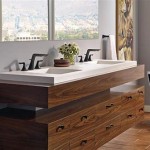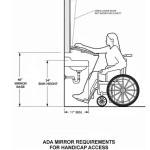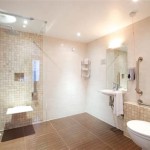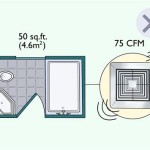Broan Bathroom Fan Light Bulb Replacement: A Comprehensive Guide
Broan bathroom fans are commonplace in many residential and commercial buildings, providing essential ventilation and often including integrated lighting. Over time, the light bulbs within these units will inevitably burn out and require routine replacement. This article provides a detailed guide on the process of changing a light bulb in a Broan bathroom fan, encompassing various models and potential challenges. Understanding the correct procedures will ensure safety, prevent damage to the fan unit, and maintain optimal functionality.
It's crucial to emphasize electrical safety before commencing any maintenance work. This includes turning off the power to the bathroom fan at the circuit breaker. Ignoring this step can expose the technician to potentially lethal electric shock. Double-checking the breaker is off using a non-contact voltage tester is highly recommended, further mitigating the risk of accidental electrocution.
Preparing for the Light Bulb Replacement
Before starting the light bulb replacement, gather the necessary tools and supplies. This typically includes a small screwdriver (often a Phillips head), a new light bulb of the correct type and wattage, and potentially a step ladder if the fan is mounted high. Consulting the Broan fan's manufacturer's documentation is advised to identify the correct bulb type. Using the wrong bulb can lead to overheating, premature bulb failure, or even damage to the fan's electrical components.
Different Broan fan models utilize different bulb types. Some utilize standard incandescent bulbs, others use compact fluorescent lamps (CFLs), and increasingly, LED bulbs are becoming prevalent. The wattage rating is also critical; exceeding the maximum wattage stipulated by the manufacturer can create a fire hazard. The information regarding the correct bulb type and wattage is usually found on a label inside the fan housing or in the accompanying documentation.
Once the tools and bulb are gathered, prepare the work area. Cover the toilet or any other vulnerable bathroom fixtures with a drop cloth or old towel to protect them from falling debris or accidental damage. Having adequate lighting in the room is also essential; a portable work light can be helpful if the natural light is insufficient.
Furthermore, consider wearing gloves to protect your hands. This protects against broken glass should a bulb shatter unexpectedly and keeps the fixture cleaner. Safety glasses are also recommended to prevent debris from entering the eyes during the bulb removal and installation process.
Accessing the Light Bulb Compartment
The method for accessing the light bulb compartment varies depending on the Broan bathroom fan model. However, a common design involves a removable lens or cover secured by screws, clips, or a combination of both. Examining the fan housing carefully will reveal the method of attachment.
If screws are used, carefully loosen them using the appropriate screwdriver. Avoid over-tightening or stripping the screw heads. If clips are used, gently pry the lens or cover away from the fan housing. Apply even pressure to avoid breaking the clips or damaging the surrounding plastic. Some covers may slide or rotate before they can be removed.
Once the cover is removed, the light bulb will be exposed. Be aware that the old bulb may be hot, especially if it was recently in use. Allow the bulb to cool down completely before attempting to remove it. Handling a hot bulb can cause burns.
In some cases, there may be a secondary protective shield or cover over the light bulb within the compartment. This shield is typically held in place by screws or clips and needs to be removed before accessing the bulb. Again, proceed with caution and carefully observe the method of attachment before attempting removal.
Removing and Replacing the Light Bulb
Once the light bulb is accessible, the removal process depends on the type of bulb. Incandescent bulbs are typically removed by gently twisting them counterclockwise. CFLs and LED bulbs may have a similar twist-and-lock mechanism or a simple push-and-release system.
When removing the old bulb, handle it carefully to avoid breakage. If the bulb does break, take precautions to avoid cuts from the glass shards. Use gloves and a tool to collect the broken pieces. Dispose of the broken bulb properly, following local regulations for hazardous waste disposal, particularly for CFLs, which contain trace amounts of mercury.
Before installing the new bulb, inspect the socket for any signs of corrosion or damage. If corrosion is present, clean the socket contacts with a wire brush or electrical contact cleaner. A damaged socket may need to be replaced entirely to ensure proper electrical connection and safe operation.
When installing the new bulb, align the base of the bulb with the socket and gently twist or push it into place, depending on the bulb type. Ensure that the bulb is securely seated in the socket but avoid over-tightening, which can damage the socket or the bulb itself.
Reassembling and Testing the Fan Unit
After the new light bulb is installed, carefully reassemble the fan unit in the reverse order of disassembly. Replace any protective shields or covers, ensuring they are securely fastened. Reattach the lens or cover to the fan housing, tightening any screws or engaging any clips.
Once the fan unit is reassembled, restore power to the bathroom fan at the circuit breaker. Test the light bulb to ensure it is working correctly. If the bulb does not light, double-check that the bulb is properly seated in the socket and that the circuit breaker is fully engaged. If the bulb still does not light, the socket or the wiring may be faulty, requiring further troubleshooting or professional assistance.
After confirming that the light bulb is working, test the fan function to ensure that it is operating correctly. If any unusual noises or vibrations are present, turn off the power immediately and inspect the fan unit for any loose parts or obstructions. Addressing these issues promptly will prevent further damage to the fan and ensure its continued reliable operation.
Finally, clean up the work area, removing any tools, debris, or protective coverings. Properly dispose of the old light bulb and any other waste materials. Restoring the bathroom to its original condition completes the light bulb replacement process.
Regular maintenance, including bulb replacement, will help prolong the life of the Broan bathroom fan and ensure optimal performance. Periodically inspecting the fan for dust buildup and cleaning the fan blades will also contribute to its efficiency and longevity.

How To Clean Replace Light Broan Model 678 Exhaust Fan

How To Change A Light Bulb In Bathroom Ventilation Exhaust Fan Step By Instructions

How To Remove And Replace The Light Bulb On A Broan Bathroom Fan

How To Remove Trim On Broan 678 Exhaust Fan Light Change The Bulb

How To Replace The Ceiling Exhaust Fan And Light In Bathroom

Exhaust Fan How Can I Remove Open Up This Broan Bathroom Vent Heater Home Improvement Stack Exchange

How To Remove The Light Cover On A Bathroom Fan

Complete Bathroom Exhaust Fan Replacement Ultimate Diy Guide

162 By Broan 70 Cfm One Bulb Heater Ventilation Fan 250w Br40 Infrared 4 0 Sones Tri City S

40w Light Bulb For Broan Range Vent Hood Sb02300264 Ap5610225 1373112 B0230026
See Also







